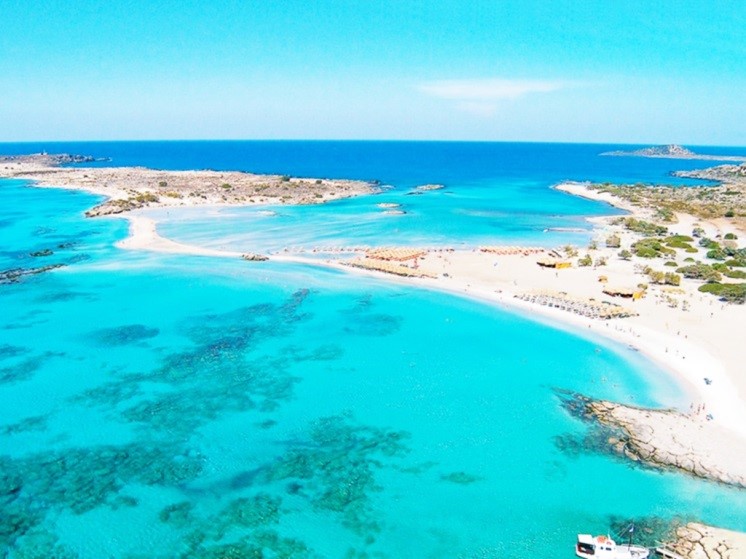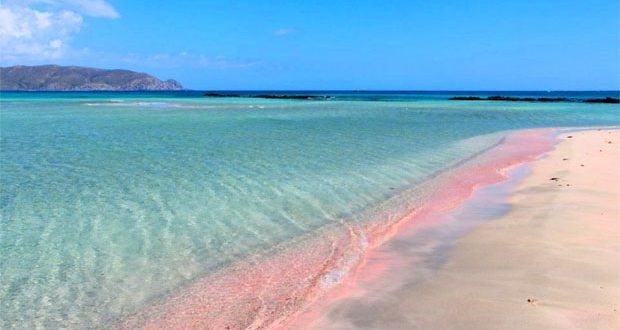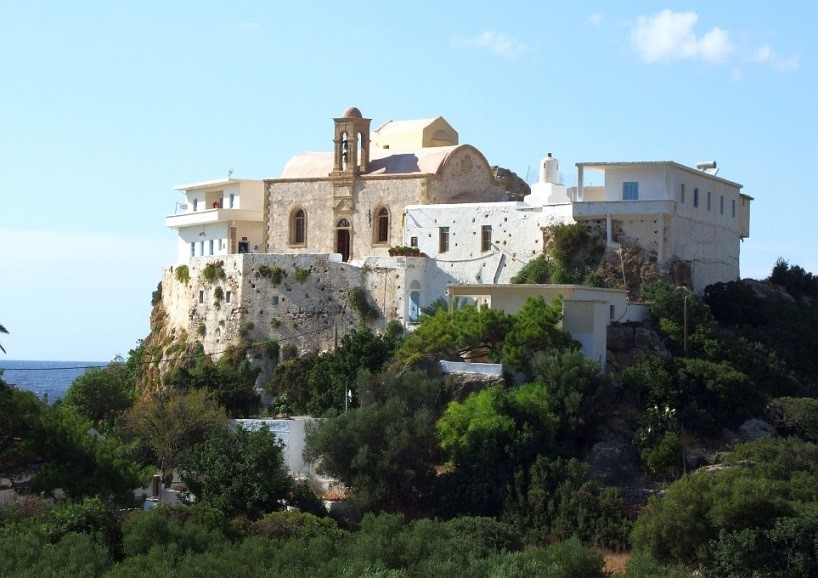
Elafonissi is located 76km southwest of Chania and 5km south of Chrysoskalitissa Monastery, at the southwest end of Crete. Elafonissi is a long-haired peninsula, which often "breaks" at the beginning, giving the feeling of a separate island. It has been included in the Natura Protected Areas, as it is full of dunes with sand lilies and cedar trees. Also here are the endangered turtles called careta-careta and many rare species of animals. It is strictly forbidden to cut plants or even take a bottle of sand with you.

On either side of this peninsula are formed beautiful beaches with white sand and turquoise waters, reminiscent of exotic Caribbean landscape. The sand in many places is pink from the thousands of broken pillows. At the point where the peninsula breaks the water does not exceed 1 meter and creates a small lagoon, ideal for children. With little care you can pass across, even having your things with you.

The eastern side of the beach, in front of the lagoon, is organized and gathers most people. There are umbrellas, showers, lifeguards, refreshments and changing rooms. Also, behind the organized beach there is a huge area for parking and even further some rooms to let. On the contrary, the beaches on either side of the island have fewer people and are more beautiful. If you want to completely isolate or even nudge, you can walk along the peninsula until you find a bay you like.
SIGHTS AND HISTORY
The story of Elafonisos is lost in the depths of the ages. Here are placed the Mussel Islands of ancient Greeks, where they built a temple dedicated to Mousageget Apollo, leader of the nine Muses of Greek mythology. In this way they wanted to seduce the wild sea of the region, as the muses could with their music calm the sea deities. Also, on the opposite bank was built a sanctuary dedicated to Inos, the daughter of Cadmus.
The island was once a base of pirates, and today it is a pole of attraction for thousands of visitors. So, contrary to what most people think, the name of the island is not an island of deer, as there were never deer in the area. Instead, the real name is Elafonisi, coming from the spoils hidden by the pirates on the island. Who knows, maybe find some hidden treasure when you come here ...
Close to the parking area you will see a hero monument. It is there to remind of a tragic story that unfolded in Elafonisi on Easter Sunday of 1824 and is celebrated each year during the feast of Saint Irene. The men of Ibrahim Pasha then slaughtered 600 women's children and 40 warriors as retaliation for the rebellious people who had been hiding in Elafonisi, hoping that the Turks would not find the shallow passage. But a wandering donkey would have betrayed the passage, seeking his master. After they slaughtered the Christians, the Turks continued their massacres at the Cave of elves. According to testimonies, this figure reached 850 people, and many seem to have been sold as slaves.
A walk on the island definitely deserves any hassle. You can walk for 20 'to the lighthouse on the edge of the island where the chapel of Agia Irini is built. You will cross beautiful scenery with dunes and lovely coves. In Agia Irini you will see the chapel of the same name with the endless view of the sea. The beacon located there today was built before the occupation (1939) and has a range of 30 miles. In its place there was a smaller lighthouse built after the tragic wreck of the Austrian ship Imperatrix in February 1907. In the wreck, 38 of the 140 passengers lost their lives, the bodies of which were buried on the island.
5km north of the beach there is the Monastery of Chryssoskalitissa. This monastery is located on a rock, reminding of a fortress. According to tradition, the last step of the ladder to the monastery is gold, but only those who really believe can see it.



